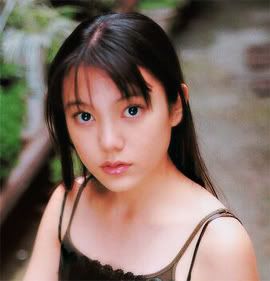
Over the centuries, many samurai became accomplished poets. Minamoto Sanetomo (1192-1219), the third Kamakura shogun, published an anthology of his poems, the "Kinkaishu", and Taira Tadanori (1144-1184), the younger son of Taira Kiyomori,
achieved fame as a poet. Even during the constant fighting of the Sengoku Jidai, some samurai developed artistic talents to match their martial accomplishments. Date Masamune (1565-1636), the daimyo of Sendai in northern Honshu, was known as the "One-eyed Dragon" after being wounded in battle. He cut away the damaged eye as it hung down his cheek, to prevent an enemy seizing it during the fighting. It might be supposed that such a man would have no time for poetry, but he was so moved by the beauty of mount Fuji that he felt inspired to write:
"A world of recluses"
While poetry, calligraphy and other literary arts attracted samurai devotees, perhaps the most popular mode of artistic expression with the samurai class as a whole was the art of Cha no Yu, or the tea ceremony. Deriving from rituals followed in Chinese Buddhist temples, the tea ceremony was introduced to Japan by the monks Eisai (1141-1215) and Dai-O (1236-1308). The abbot of Daitokuji, Ikkyu (1398-1481), passed on the art to his disciple Shuko (1422-90), under whose patronage the tea ceremony ceased to be the exclusive province of Zen priests and attracted a secular following.

As a Zen-inspired art, Cha no Yu aims to develop a sense of natural simplicity; a direct experience of reality, uncluttered by intellectual considerations. The utensils and setting selected for the ceremony reflects this aim, being made of plan, natural materials.
The Zen master, Takuan (1573-1645), described that the ideal conditions for the tea ceremony: "Let us then construct a small room in a bamboo grove or under trees, arrange streams, rocks and plants trees and bushes.... In this room we can enjoy the streams and rocks as we do the rivers and mountains in Nature... we listen quietly to the boiling water in the kettle, which sounds like the breeze passing through pine needles, and become oblivious of all worldly woes and worries; we then pour out a dipperful of water from the kettle, reminding us of the mountain stream, and our mental dust is wiped off. This is truly a world of recluses, saints on earth".
The great warlords, Oda Nobunaga and Toyotmi Hideyoshi, were both enthusiastic patrons of the tea ceremony. Hideyoshi was so fascinated by the practice that, in 1587, he staged a vast public event open to anyone interested in the art of Cha no Yu; more than 1500 small enclosures were erected in the Kitano woods to accommodate enthusiasts from all over Japan, and on the first day tea masters served over 800 guests.
some of Hideyoshi's warriors regarded the tes ceremony with suspicion. Kuroda Yoshitaka observed that it was dangerous to sit so close to a possible enemy while unarmed. But even he conceded to that the ceremony might have some value; the isolation and calm of the tea house provided the ideal location for private discussions of sensitive military matters. For many samurai, the tea ceremony become simply another means to display their wealth and sense of fashion, and vast sums were paid for the pottery, bamboo and metal utensils used in the ceremony.
